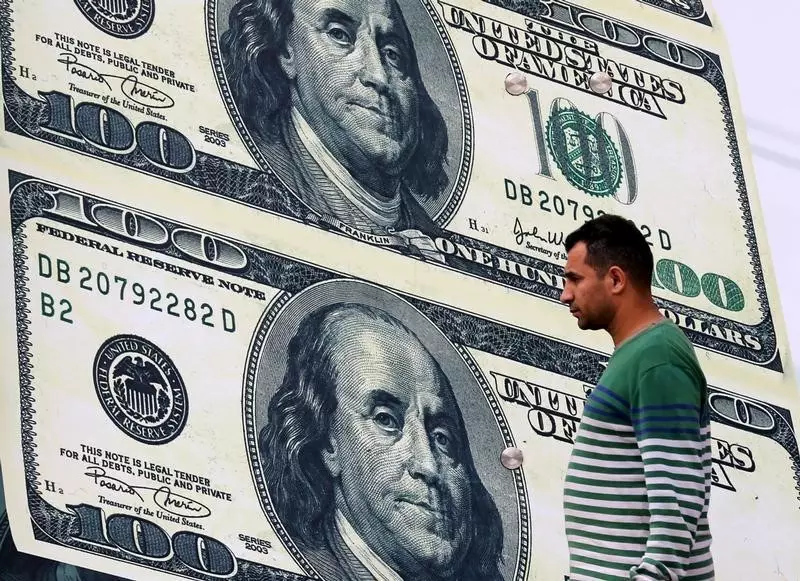The foreign exchange market is a dynamic and intricate realm influenced by multifaceted economic factors and global events. Recently, the US dollar has demonstrated a steadying effect, particularly after facing losses attributed to a positive inflation report. As investors digest new economic data and prepare for upcoming political changes, the interplay between the dollar and other major currencies, such as the British pound and euro, has become a focal point of analysis.
In the latest trading sessions, the US dollar showed resilience by displaying slight gains after a series of declines. This recovery followed the release of a consumer price index (CPI) report indicating a cooling inflation trend, a promising sign for market participants. The Dollar Index, which measures the dollar’s value against a selected basket of currencies, rose slightly to 108.950, halting a three-day losing streak. This bounce-back, however, masks a more complex narrative; core inflation figures remain persistent at approximately 3% year-on-year, raising skepticism about the Federal Reserve’s capacity to implement significant interest rate cuts in 2025.
ING analysts highlighted that this environment of subdued inflation allows global asset markets to breathe a sigh of relief, albeit temporarily. Investors are maintaining a cautious outlook as they anticipate potential shifts in monetary policy. Notably, attention has turned toward the Senate confirmation hearing for Scott Bessent, President Donald Trump’s Treasury Secretary nominee. His response to inquiries regarding the dollar’s trajectory and tariff strategies could have notable implications for future forex market dynamics.
On the other side of the Atlantic, the British pound faced downward pressure following disappointing economic growth figures. Data revealed that the UK economy barely eked out a 0.1% growth rate in November, falling short of expectations for a 0.2% increase. This lackluster performance, coming off a streak of declines, has further led to speculation regarding the likelihood of a rate cut by the Bank of England (BoE) in the upcoming February meeting. The expectation of two potential cuts in 2025 reflects a market increasingly skeptical about the UK’s economic recovery and overall resilience.
Such dismal growth prospects have fueled fears about rising inflation in the UK, making it imperative for the BoE to navigate the dual challenges of stimulating growth while managing price stability. The consequences of these economic challenges are manifesting, evidenced by the pound trading at around 1.2199 against the US dollar, reflecting a 0.3% decline.
Similarly, the euro is struggling to gain traction against the dollar, with EUR/USD slipping to 1.0290. Despite a chance for the euro to rally following favorable US CPI data, it failed to maintain momentum, reflecting broader concerns about the Eurozone’s economic viability. Analysts have noted an increasing perception that the Eurozone is likely to lag behind, with growth dwindling and leadership appearing uncertain.
The European Central Bank (ECB) is projected to ease monetary policy significantly, with expectations of around 100 basis points in rate cuts by 2025. This anticipated easing in combination with weak economic fundamentals may contribute to a further downturn in the euro’s performance against numerous currencies, including the resilient US dollar.
Across Asia, the yen has shown considerable strength, especially against the dollar. After a notable drop in USD/JPY to 155.75 — the lowest point since mid-December — the yen’s appreciation was fueled by indications from Bank of Japan’s Governor Kazuo Ueda regarding potential interest rate hikes. This reflects a growing confidence based on steady inflation and wage growth, traits essential for any economy aiming to bolster its currency’s value.
Conversely, the Chinese yuan has held steady at around 7.3317 against the dollar, hovering near a 16-month high. As attention turns to China’s forthcoming fourth-quarter GDP data, traders are keen to assess the potential trajectory of the yuan amidst fluctuating economic signals.
Overall, the current forex landscape presents a complex tapestry woven from threads of economic indicators, policy expectations, and geopolitical developments, with the US dollar standing resilient amidst varying pressures from the pound, euro, and other currencies. As market participants navigate this landscape, the interplay between economic performance and monetary policy will be crucial in shaping future currency movements.


Leave a Reply